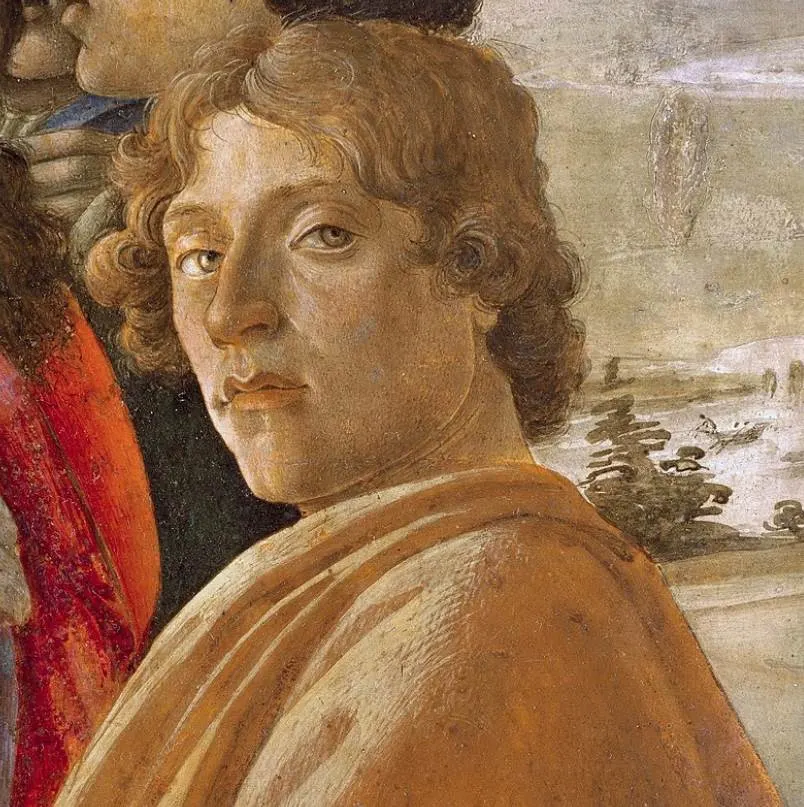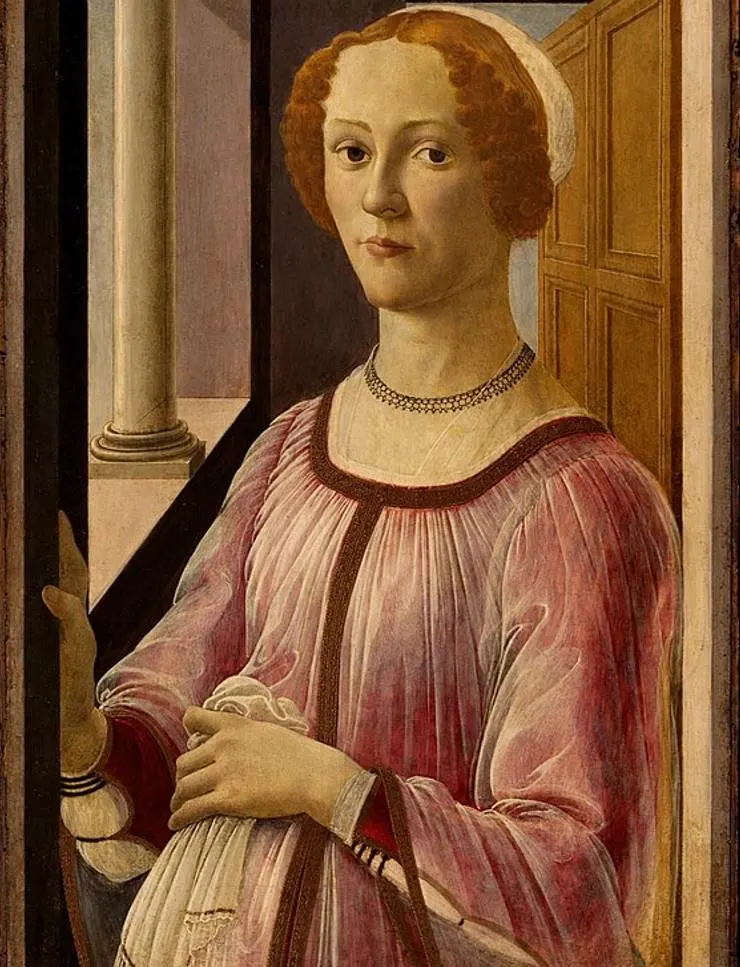Little is known about the true identity of the depicted woman in a portrait believed to be by one of the greatest Renaissance artists in history.
There is, however, an inscription within the composition of the work that might hint at who this woman really is.
Let’s take a closer look at some of the most interesting facts about Portrait of a Lady Known as Smeralda Brandini by Sandro Botticelli, a mysterious painting by the Italian artist.
1. It was completed when the artist was about 30 years old
The Portrait of a Lady Known as Smeralda Brandini is a painting that was presumably by the hand of Sandro Botticelli (1445-1510), an artist who spent most of his life in Florence.
Today, he’s considered to be one of the greatest masters of the Renaissance, but this wasn’t always the case.
His art was just about forgotten until the 19th century when he came to be admired by a group of English artists known as the Pre-Raphaelites.
He was one of the pivotal figures in the transition between Gothic art and Renaissance art. His later style, however, marks a sense of nostalgia for earlier times instead of progress to the High Renaissance.
He completed this portrait around 1475, a time when the artist was 30 years old and his reputation in and around Florence was growing.

2. It depicts a wealthy Florentine woman wearing traditional clothes
The Renaissance master completed many portraits as he was popular among the upper class in his native Florence.

This painting depicts a wealthy woman who is wearing a type of dress known as a “guarnello.” These were the traditional clothes of rich women in FLronece at the time.
The same type of dress as worn by the Mona Lisa, arguably the most famous painting in the world by the hand of Leonardo da Vinci.

3. There’s an inscription on the windowsill that identifies the woman
Nothing is known about the commission of the painting and we can only identify the woman based on an inscription on the windowsill at the bottom.
Although it’s barely readable, it says:
Smeralda di M.Bandinelli Moglie di VI… Bandinelli

4. Smeralda Brandini might be the grandmother of a famous Renaissance sculptor
The most important notion about this inscription is that it was added at a much later date. This doesn’t mean that the identification isn’t true, however.
The name has been linked to a Renaissance sculptor named Baccio Bandinelli (1493-1560), the son of a Florentine goldsmith and successful artist himself.
What’s remarkable is that he was born Bartolommeo Brandini and only took the surname Bandinelli in 1530. This means the inscription dates back to at least after this year.
Esmeralda (Smeralda) Donati Brandini was the grandmother of Baccio. She was the wife of Viviano Brandini and the mother of the goldsmith Michelangelo de Viviano de Brandini of Gaiuole, Baccio’s father.
A document that dates back to 1469 reveals she was 30 years old at the time which means that she was approximately 36 years old when this portrait was completed.

5. The portrait’s composition was revolutionary in the 15th century
When Botticelli started his career, he mainly produced portraits of people in profile. This gradually changed as he experimented with other compositions.
The Portrait of a Lady Known as Smeralda Brandini depicts the woman in a three-quarter pose while her hand rests on the window frame.
This added additional depth to the painting which was revolutionary at the time. This work is also considered to be the first example of a three-quarter pose portrait in the artist’s oeuvre and possibly in Florence.
Another remarkable fact is that the woman has a very strong gaze. Back in the day, women were supposed to lower their eyes as a sign of modesty. This is not at all the case with this lady.
The painting has been restored because her right pupil and mouth were damaged by vandals, probably because of this notion.

6. It was once owned by an English poet who mentioned it in one of his poems
The painting changed hands quite a bit throughout its history and it surfaced in Paris in the collection of the Comte James de Pourtalès Gorgier (1776–1855).
From this collection, it was sold for 3,400 francs in 1865 and eventually acquired by Dante Gabriel Rossetti (1828-1882) in 1867 at Christie’s.
Rossetti was an artist himself and the founder of the Pre-Raphaelite Brotherhood in 1848. He was also a poet and wrote about this work which he purchased for just £20:
What masque of what old wind-withered New-Year
Honours this Lady?* Flora, wanton-eyed
For birth, and with all flowrets prankt and pied
Rossetti made a reference to the link between Smeralda Brandini and the woman Botticelli depicted in his world-famous and enigmatic “Spring” (the early 1480s) or “Primavera” painting.
Together with The Birth of Venus (1484-1486), it’s considered to be the most famous work in his oeuvre.
Art historians, however, haven’t found any evidence to assume that the woman in this portrait served as the model for the artist’s masterpiece.

7. How big is Portrait of a Lady Known as Smeralda Brandini By Botticelli?
The Italian artist produced numerous monumental works of art during his career, but his portraits were usually humble in size.
The Portrait of a Lady Known as Smeralda Brandini is a small tempera-on-panel painting that has dimensions of 65.7 × 41 centimeters (25.9 × 16 inches).
8. Where is the painting located today?
Rossetti didn’t keep the painting as he sold it to his patron named Constantine Alexander Ionides (1833-1900), a man who was mainly interested in Greek art.
He paid £315 for it in the 1880s which had the Pre-Raphaelite artist boasting that he had become a successful art dealer.
The painting was bequeathed to the Victoria and Albert Museum in London following Ionides’ death in 1900 and it remains a popular artwork at the V&A today.

